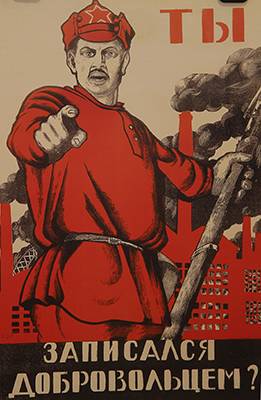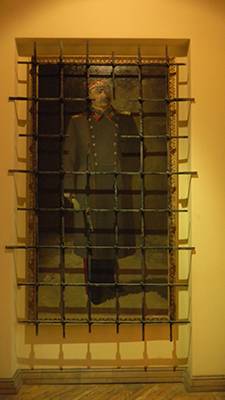
If you are interested in the history of Russia during the 20th century, the Museum of Russian Political History is the right place for you. Located in two former private mansions that belonged to two outstanding Russian people, the ballet dancer Matilda Kshesinskaya and Baron Brandt, the museum not only reveals the latest history of the biggest country in the world but also shows some interiors from the turn of the century.
There is an exhibition devoted to Matilda Kshesinskaya, an outstanding Russian ballet dancer probably as well-known as Anna Pavlova, who happened to be the lover of two Grand Dukes from the Russian Empire (Sergey and Andrew), and even had an affair with the future Tsar Nicholas II (before his engagement with Alix of Hessen). She had a son from Grand Duke Sergey called Vladimir. However in 1921 she married Grand Duke Andrew and later Matilda received the title of Princess, establishing her own Ballet School in Paris (Margo Fountain was her pupil).
Chronologically the museum displays the events starting from the reign of Catherine the Great. However, the biggest and the most exciting part of the exhibition is devoted to the history of Russia starting from the World War I (1914) and finishing with the year 2000 when Vladimir Putin became the president of Russia.

You will be able to learn about two Russian Revolutions from 1917 – the February bourgeois democratic revolution and the famous October Revolution when the Bolsheviks seized power in Russia. Not so many people know that after the February revolution, when Lenin finally returned to Russia from his exile in Switzerland, the Bolsheviks’ headquarters were located exactly inside the mansion of Kshesinskaya and this is where Lenin had his office. It was in the mansion of Kshesinskaya where Lenin for the first time announced his famous April Theses. The exhibition shows the rooms that witnessed Lenin and the original balcony from which Lenin made so many passionate speeches.
A huge part of the museum is occupied by the Soviet period of the Russian History and it is shown quite impartially. History is always very contradictory, that is why nowadays we are trying to see in every bit of it both the good and the evil. It is not always that easy especially when we talk about the times of the Stalin repressions, but now we have freedom of speech and we can discuss things and come to vital conclusions which help us to avoid the mistakes we have made in the past.
So if you want to know why even after killing so many people Stalin was still considered to be the Father of the nation and when he died the whole country was crying, if you want to learn how the Soviet people actually lived in the times of Khrushchev and Brezhnev and why even after all those terrible events of the 20th century Russians are still able to make jokes about themselves – then you are more than welcome to the Museum of Russian Political History!
